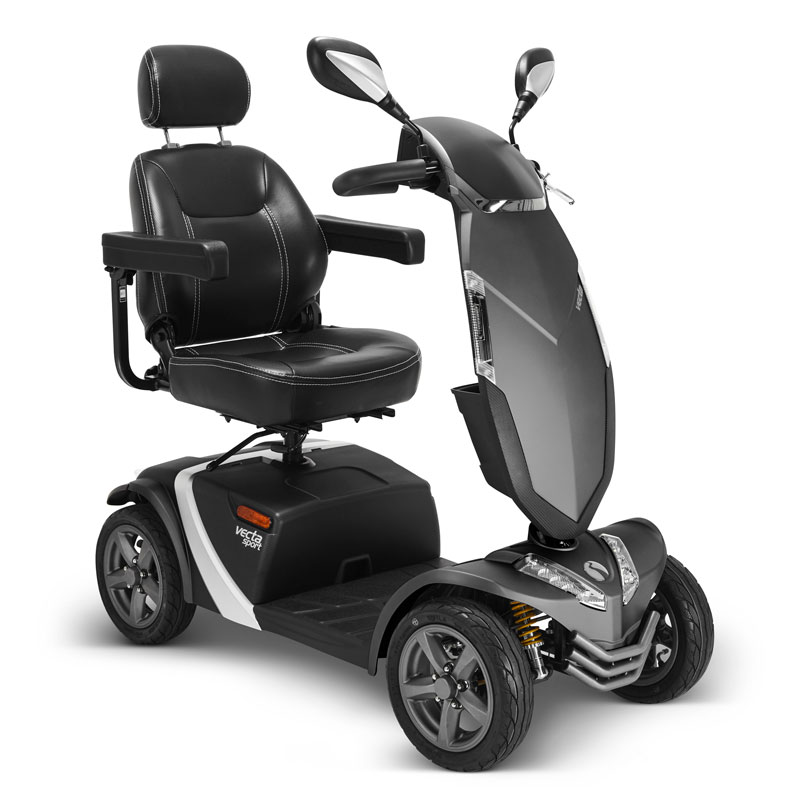
Vecta Sport Mobility Scooter
Priced from
£2,279.00
What we say
Mobility scooter.
ADD FOR COMPARISON
MobilityCo
Ableworld (UK) Ltd
First Choice Mobility Ltd
Clark and Partners
Hire through Lendocare
This product is unfortunately unavailable for hire, however; you can express your interest in making this product available for hire by clicking the button below!
If you are a national retailer who is not listed please read our faqs to find out how to add your company. If you are listed and need to update your details please read how to update your listing.
Product Information
Manufacturer's Product Description
The manufacturer has not provided any further information about this product
Manufacturer's Contact Details
http://www.electricmobility.co.uk
Electric Mobility Euro Ltd
Canal Way
Ilminster
Somerset
TA199DL
England
01460258100 info@electricmobility.co.ukKey Features
- run-flat pneumatic tyres, designed to resist the effects of deflation when punctured
- LED headlights
- adjustable padded seating
- lumbar support
- adjustable tiller
- waterproof dash panel
- USB port
- mirrored running light
- two 50Ah batteries
- charger
Product Dimensions
| Dimensions | |
|---|---|
| Capacity | 160kg |
| Length | 132cm |
| Maximum speed | 12.9km/h |
| Turning circle diameter | 347cm |
| Weight (kg) | 113kg |
| Weight of heaviest component | 95kg |
| Width | 60cm |
| Power and Function | |
| Kerb height | 10cm |
| Range | 44km |
Product Specification
No product specification has been specified.